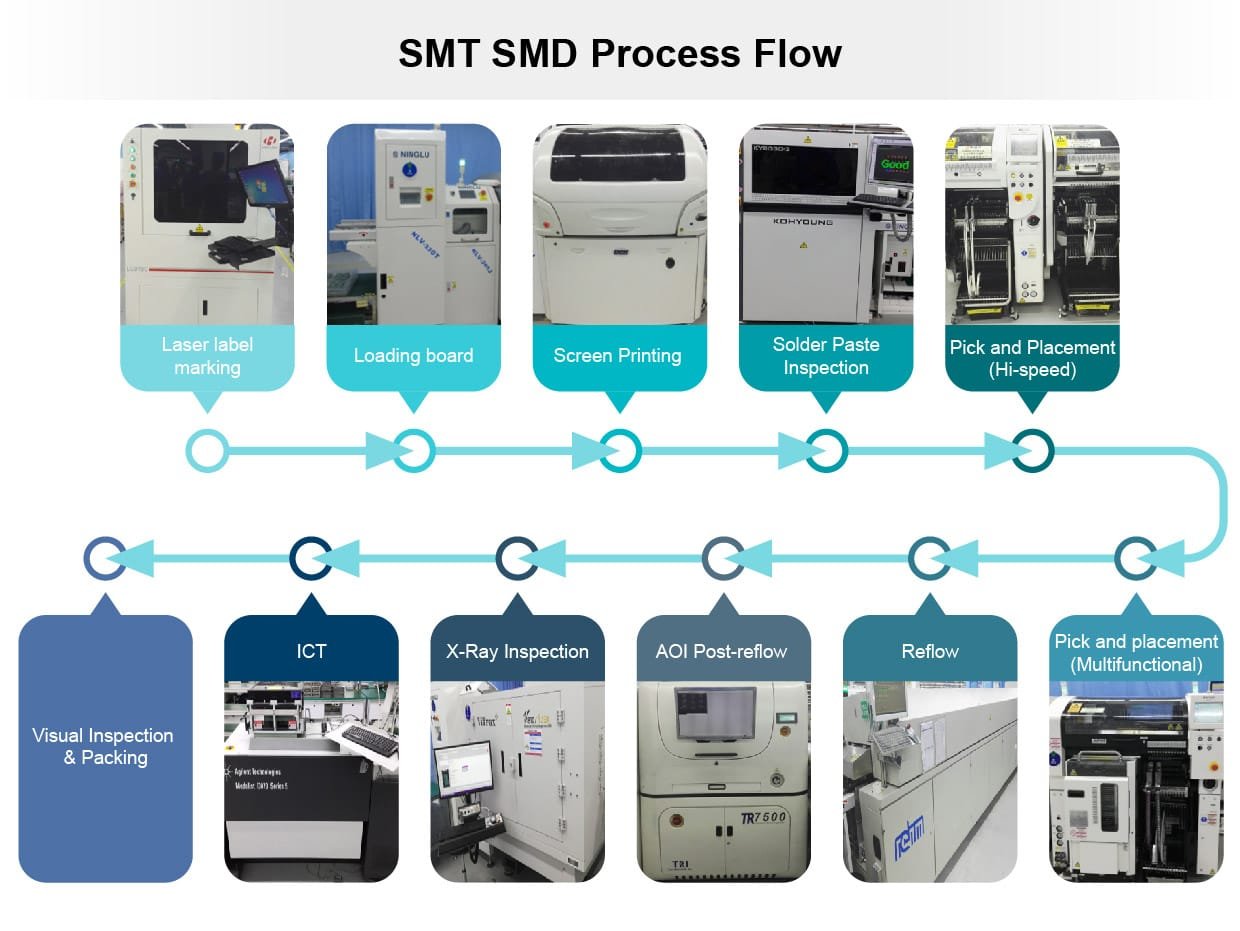Understanding SMT Machines: Working Principles
SMT (Surface Mount Technology) is an advanced process for automatically installing miniaturized electronic components onto Printed Circuit Boards (PCBs). Below is a detailed description of how SMT machines operate:

1. Printing
Purpose: To print solder paste onto predetermined positions on the PCB.
Process: A stencil with fine slots covers certain areas of the PCB. Solder paste is forced into these slots by a blade and is transferred to the corresponding positions on the PCB surface. This action is repeated until the entire PCB is correctly coated with solder paste.
2. Dispensing
Purpose: To add a special adhesive called red glue between certain components for better fastening.
Process: A specialized nozzle is used to drop small amounts of red glue into the gaps of the pads that require reinforcement.
3. Placement
Purpose: To automatically place various sized and shaped components onto the correct soldering positions on the PCB.
Process: The SMT pick-and-place machine is equipped with one or more robotic arms loaded with different nozzles, each designed for specific types and sizes of components. The robotic arm retrieves components from feeders according to a pre-programmed sequence and accurately places them in designated positions on the PCB. Once positioned, the components temporarily stay secure due to the solder paste printed earlier.
4. Reflow Soldering
Purpose: To permanently secure all components to their respective pads by heating the entire PCB to an appropriate temperature range so that the solder paste melts.
Process: The PCBA (Printed Circuit Board Assembly), which has completed component placement but has not yet been securely soldered, is sent through a continuous heating channel. The temperature gradually rises to a peak and then slowly decreases back to room temperature. During this process, the solder paste transitions from liquid to solid, effectively soldering the components in place.
5. AOI Inspection
Purpose: To check the quality of soldering and identify appearance defects, ensuring that product quality meets standards.
Process: After reflow soldering, the PCBA is placed under a high-resolution camera for inspection. The camera captures images of each solder joint, which are then compared against standard models for analysis. If issues are detected, they are flagged for workers to repair; otherwise, the product is confirmed as good and continues through subsequent processes.
In summary, SMT machines efficiently and accurately complete the entire process from raw material supply to final product inspection through a series of automated steps, significantly enhancing production efficiency and product consistency.
